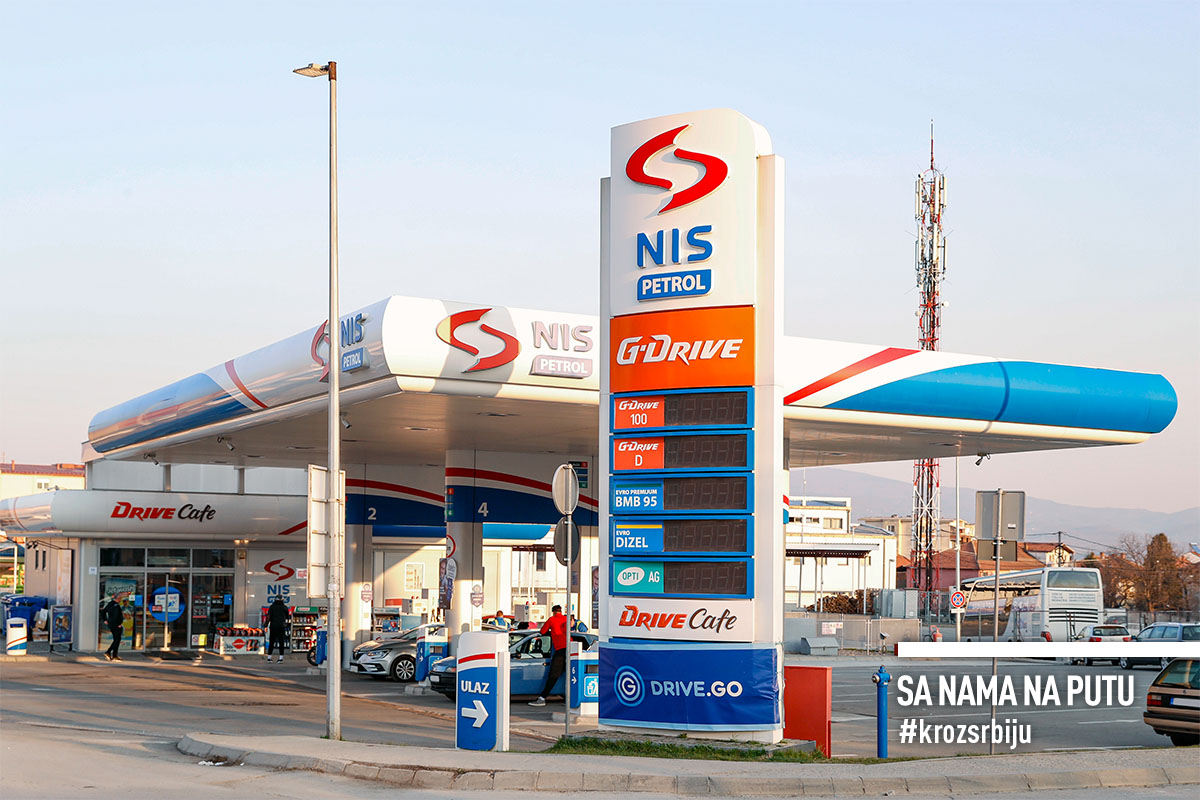Nature is greatly awakened and playful. Sunshine brings out the big smiles and warms the body. And where to pamper the soul and cheer up the heart quickly, if not in the south. We’re rushing into the city of “sevdah” and enjoyment. Where the old still resists the modern. Where girls are beautiful, and boys are skillful in singing and dancing. By taking the highway to North Macedonia, we arrive at the birthplace of Bora Stanković, in the far south of the homeland.
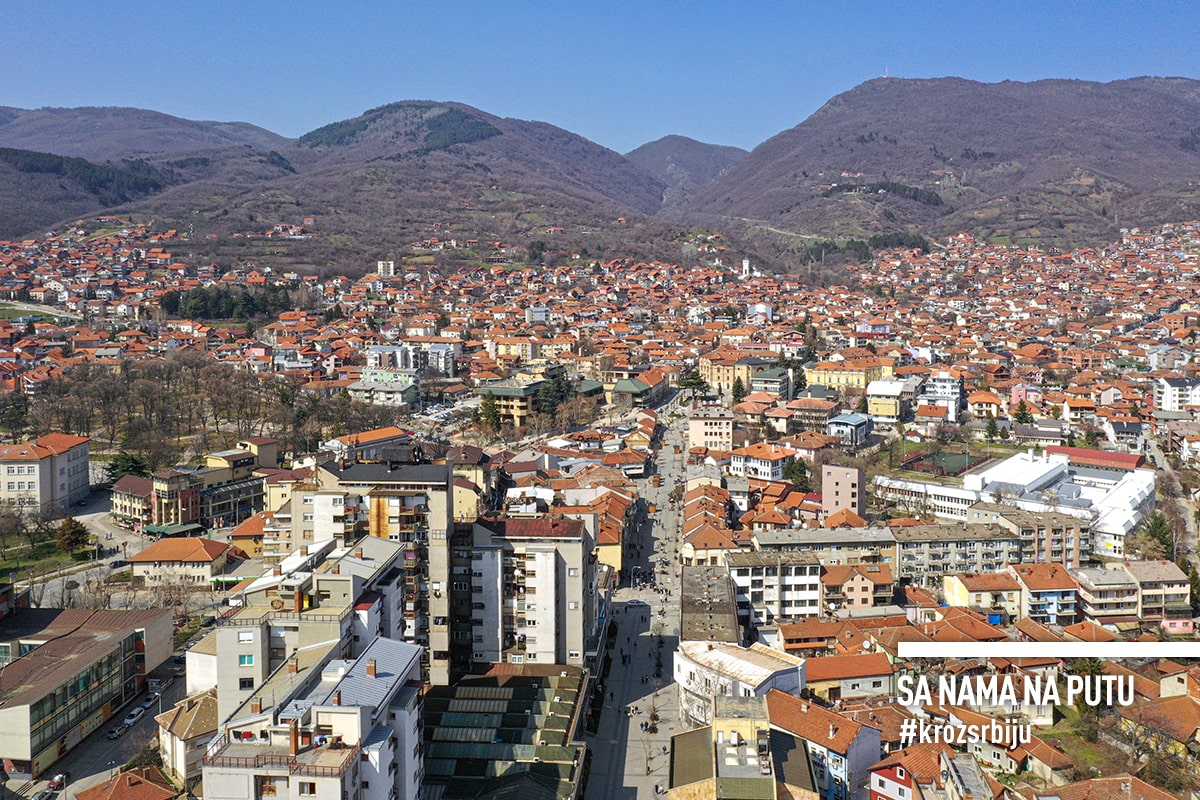
Why visit Vranje
1. Because Vranje is the town of Bora Stanković
It is settled in the valley of the South Morava, in a basin between three mountains. There are no reliable data when the first settlement was created, but given its important geographical location, it must have been quite some time ago. The first written clue about Vranje dates from the 11th century, and it is included in the Serbian state under Stefan Prvovenčani two centuries later. During the turbulent history, the Bulgarians and Germans tortured it until the final liberation at the end of World War II.
Walking through Vranje is extremely interesting, varied and exciting. At the beginning of the main promenade, a map of the city was made as a floor mosaic. There is also a fountain which is currently being renovated. A sunny and warm spring day has drawn out all sorts of people. Ah, what a crowd of men, as people from Vranje would say in a funny way. They’re keeping their special dialect jealously. And that’s the right thing to do. The pedestrian road is long, lively, with many catering businesses and various shops. Parallel to it, there is a part of it that extends to the so-called street of fun. Eh, that’s where you have to sip some coffee. A bunch of cafes and restaurants, youth chatting cheerfully, home atmosphere, almost intimate. A narrow alley leads out to the famous Burberry Building. An ordinary residential building with an unusual facade in the patterns and colours of the luxury fashion house. Although the motive of the owner or builder to make it like that is unknown, it is certainly an interesting thing that is talked about. Many more likable buildings are hidden in Vranje, walk and you will discover them, and you will surely reach the old hammam.
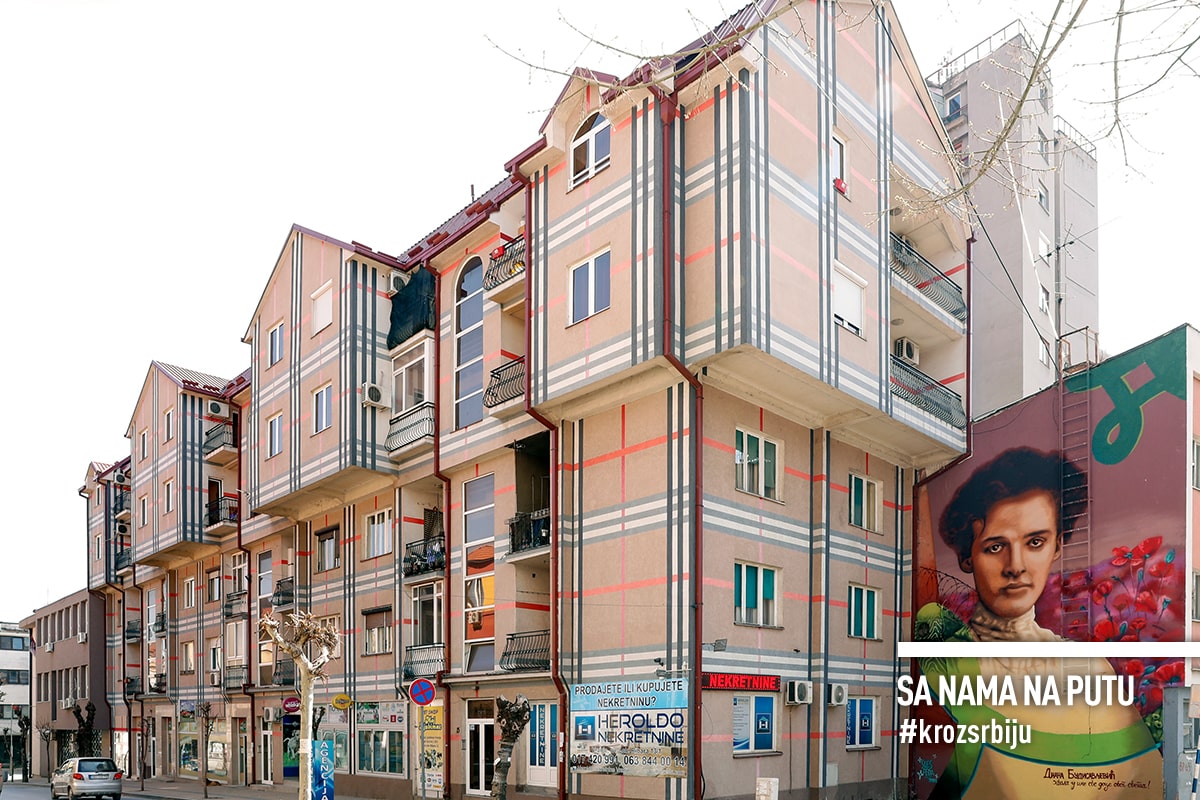
A break from the hustle and bustle is offered by a large and beautifully landscaped city park. It is obligatory to visit the White Bridge over the Vranjska River, on the edge of the city. Freshly restored, it seems, unscathed by letters and drawings. It is also called the Bridge of Love, according to the tragic love of two young people. A rich Turkish girl had a crush on a Serbian shepherd, and she died protecting her sweetheart from her own father. And then he took his own life. And so there was a bridge, says the legend. It has a board with printouts in Arabic and Turkish. Unfortunately, we do not speak any of the two languages. Whatever it says, the bridge has always been a symbol of the merger, and a message can be hinted at. One thing is certain for sure – love must not be meddled in. On the shore there is a small wooden church of St. Petka, also known as the Crucifix Mosque, with a long and unusual history, and not far away, on the other shore, rises the monastery of the Holy Father Nikolay.
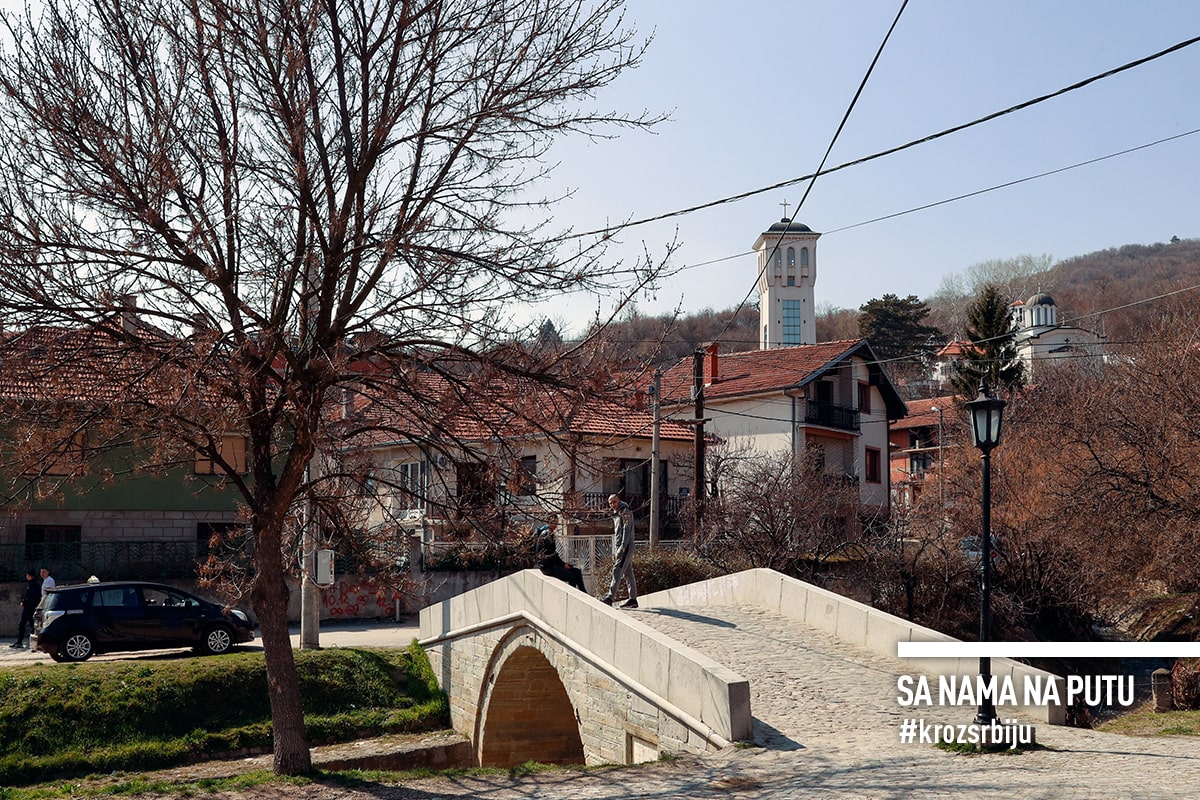
Quite a clean, temperamental and cordial city reflecting an old-fashioned spirit from every of its corners. It is clear why it inspired the work of Bora Stanković and stole the soul and heart of Serbian Pavarotti, Stanisa Stošić, who made the melody of Vranje famous far away. We have not heard of Lela, Jelena, but the trumpeters have cheered us up in the morning. It has always been hot and cheerful in the Serbian South. To keep it that way.
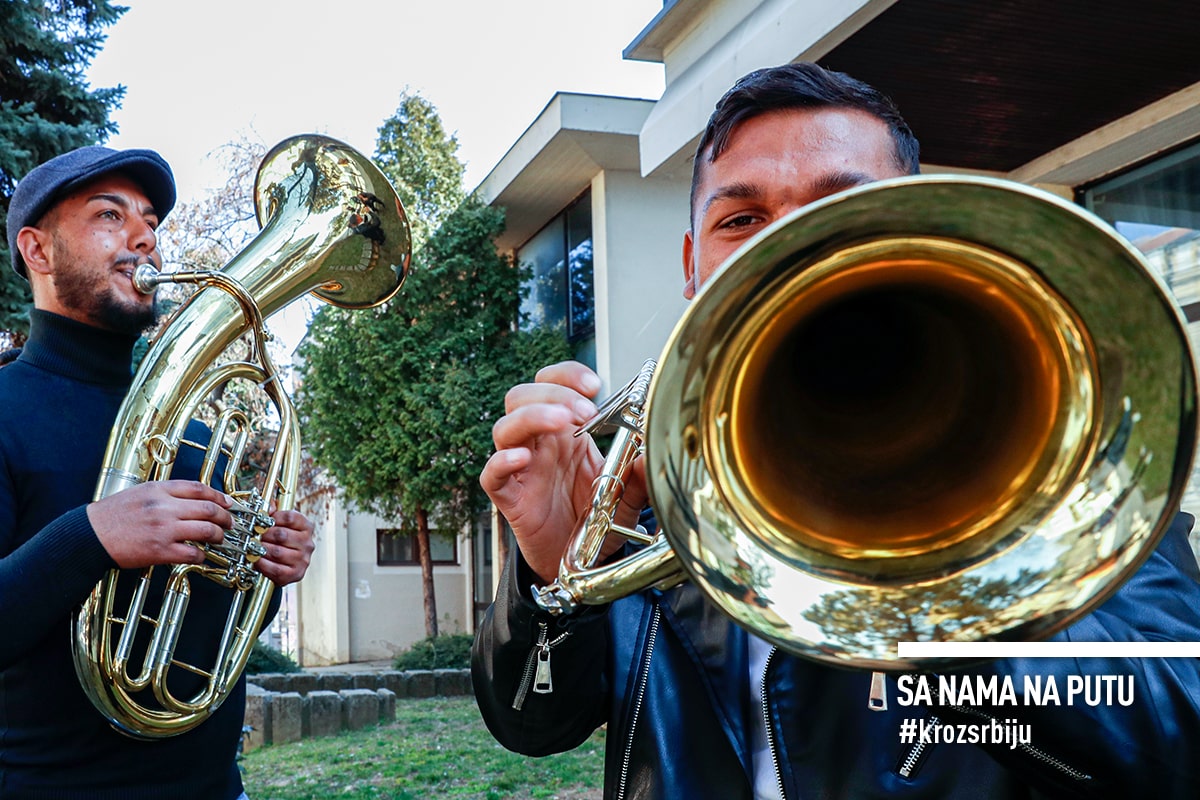
The city that has a soul is the motto that welcomed us at the entrance to Vranje. There is one, very much so, very much so. It stole a piece of ours, but it gave us much more of its.
2. Because the National Museum Vranje is a pleasure for history lovers
It is located in Pasha’s konak, built in the middle of the XVIII century, on the promenade. The plateau in front of the former selamluk, where only men used to stay – is ruled by the kids now. They run carelessly, ride bikes and skateboards, laugh and shout cheerfully. In front of the entrance is a monument to Staniša Stošić. The museum has an ethnological collection. In the chambers on the ground floor are exhibited pieces of jewellery and urban and rural clothes of this region. There would also be a few pieces of clothing that could still be worn proudly nowadays. And jewellery, varied and unusual, eternally fashionable. Ladies will enjoy it for sure. Upstairs are the dining room, the lounge, the bedroom and the girls’ room. They fairly faithfully portray old Vranje. The nearby haremluk, once inhabited only by women, is being restored and will house an archaeological collection. We are eagerly awaiting the opening.
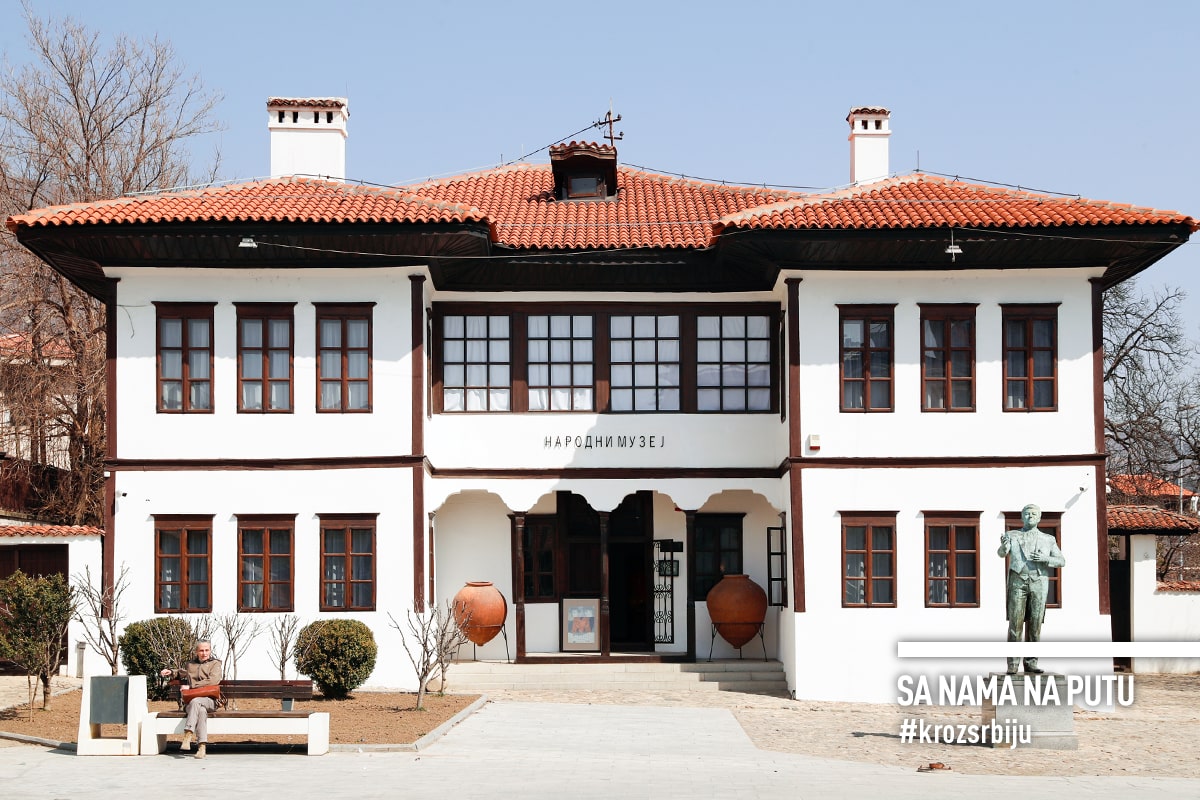
3. Because Koštana and Sofka live in Bora’s house
Vranje is inextricably linked to its own Bora Stanković, one of the greatest writers of Serbian realism, who devoted his entire literary work to his homeland. He wrote his works in Vranje’s dialect despite abundancy of criticism. Thus he immortalized it in his Impure blood, Koštana, To Tašana… Nowadays, these works of heritage are kept in Bora’s birth house in Baba Zlatina Street, a narrow cobbled alley. It was named after Bora’s grandmother Zlata, who raised him after he lost his parents early on. We pass through a large old gate and enter a spacious courtyard. Floral and gentle. Under the thick shade of a hundred-year-old mulberry tree, which, as custom had it, was planted by Grandma Zlata before she started building her home. In the courtyard there is also a vine, a well and a low table with three tripods, a carpet over the porch fence. Just like it used to be when Bora was growing up here. And the interior was originally furnished. The guest room is decorated mostly in oriental style and Grandma Zlata’s room with an iron bed and a wooden loom on which she wove. Across is Bora’s room. His literary editions, manuscripts, photographs from theatre plays and films, and personal items are on display. One can stay here for hours.
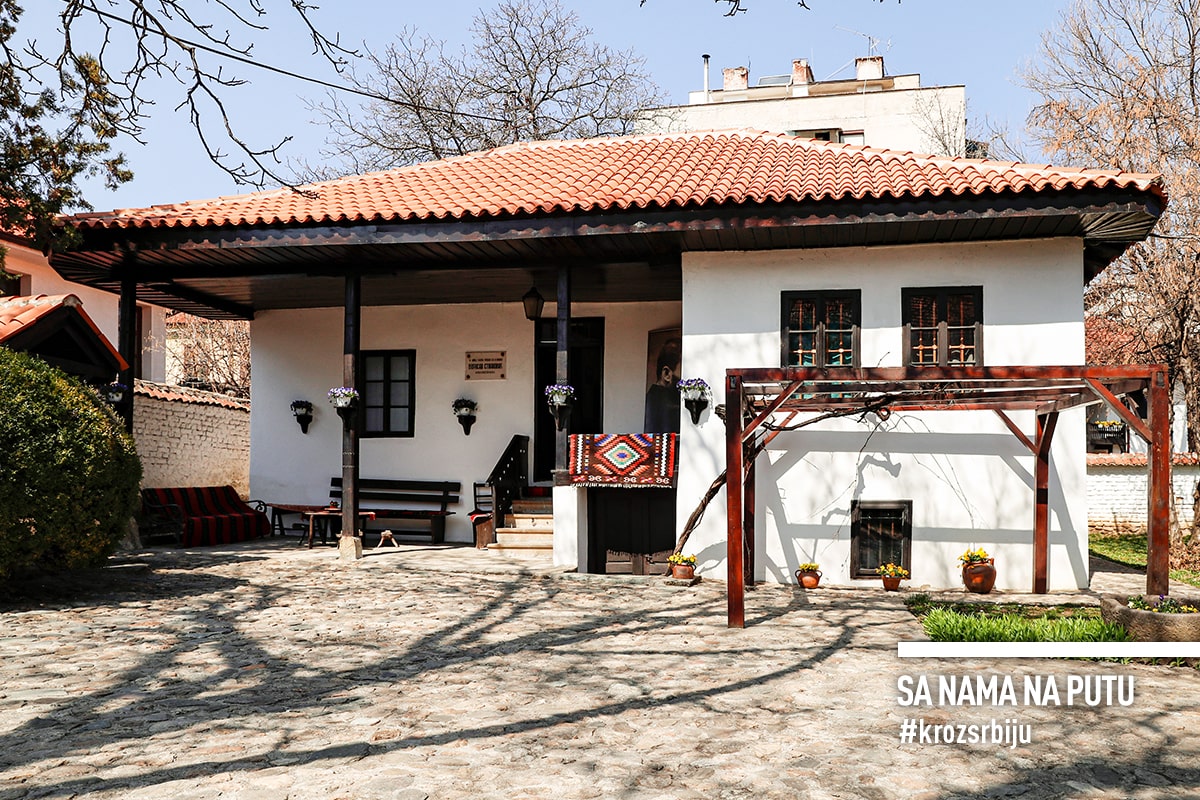
From the courtyard you can see Pribojčić’s house, another building of Oriental-Balkan style. Nearby is the birth house of the priest St. Justin Popović.
4. Because these parts were once ruled by Prince Marko
A few kilometers from the town, on the road that connects Vranjska with Leskovačka kotlina valley, there are the remains of a medieval fortress, on a protruding ridge between the mountains of Pljačkovica and Krstilovica. It is assumed that the town was built by Emperor Justinian I in the 6th century, and that today’s remains of fortifications date back to the 13th century. According to folk tradition, the fortified town was once ruled by Marko Kraljević, so it was named after a hero.
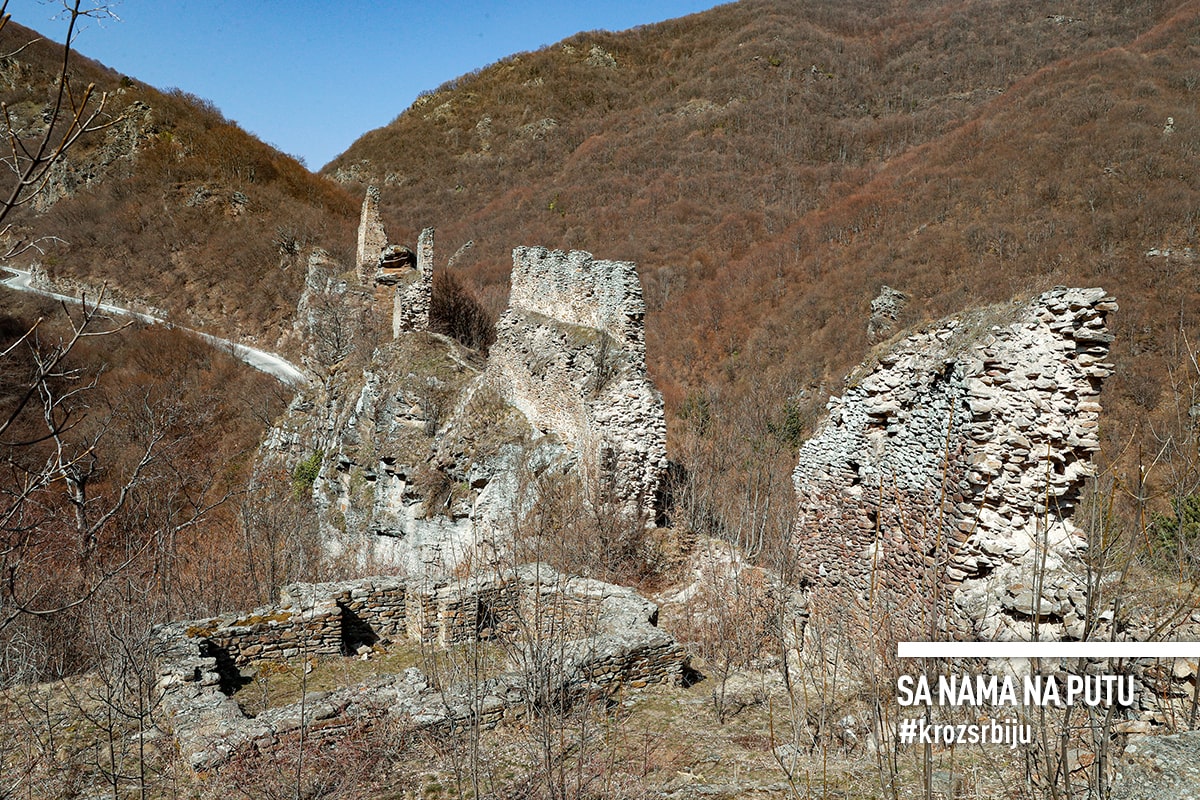
There is no landscaped parking. There is only one extension on the road where only a few vehicles can be packed. We have come across a garbage dump, scattered all over the place. A sight that would deter even the most determined tourist. However, we continue on the dirt track for several hundred meters in such an environment. Further more it’s clear. It seems that there will be a few who find the strength to turn a blind eye and make it to the fort learning a lesson on the way, and leave no cigarette butts behind. On the ascent to the ridge, a path of stone can be noticed. Be sure to walk carefully uphill, especially downhill. As expected, the fortress is abandoned. In the shrubs and vegetation. Without any markings, so one can only speculate on what the builders were building. Between the slopes of the hill there is a view towards the town, while under the steep cliff the water murmurs. Nature has offered a great experience, just to give it a little bit of help by men. Marko’s fortress is one of the oldest cultural heritage of the Vranje region and a cultural asset of great importance. How it would look if it were something of lesser importance. Sadness and shame.
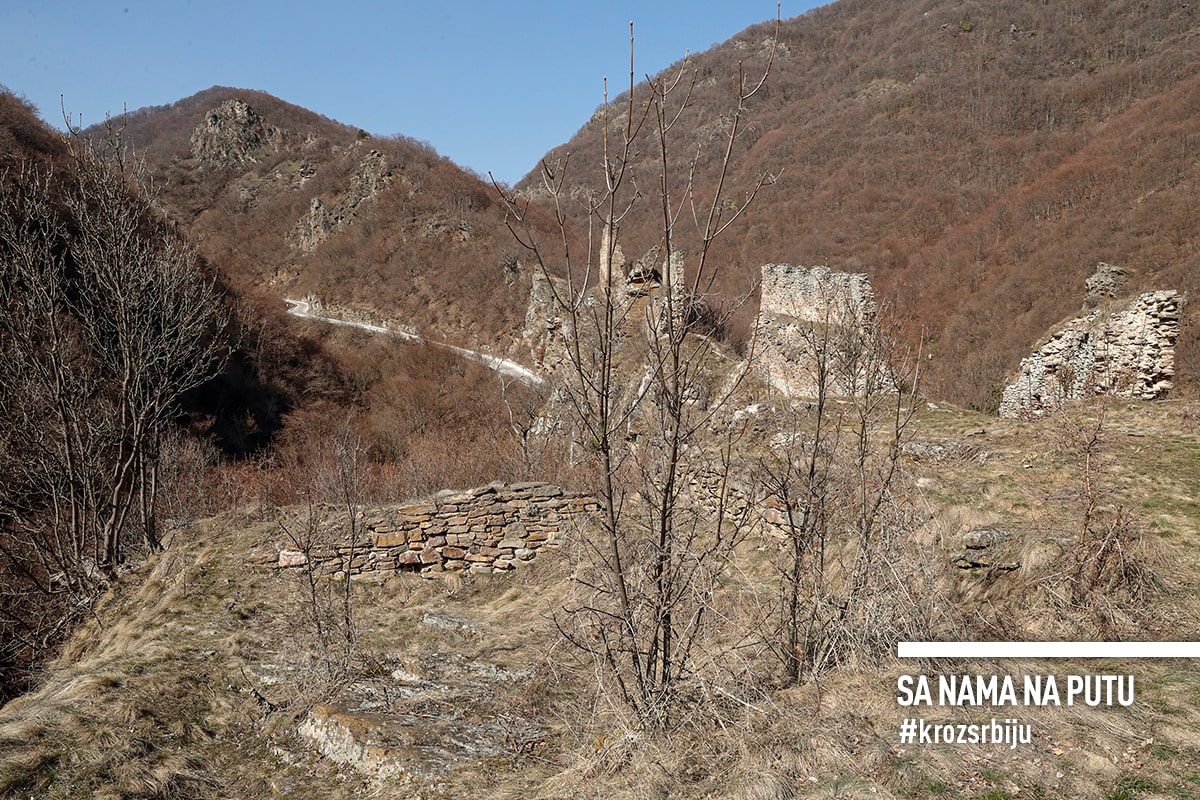
On the way back to Vranje there is a separation for hill Pržar. We’re making a detour in hopes of improving our impression. It did. A wooded, landscaped picnic area where you can enjoy a refreshing walk. Another beautiful view of Vranje.
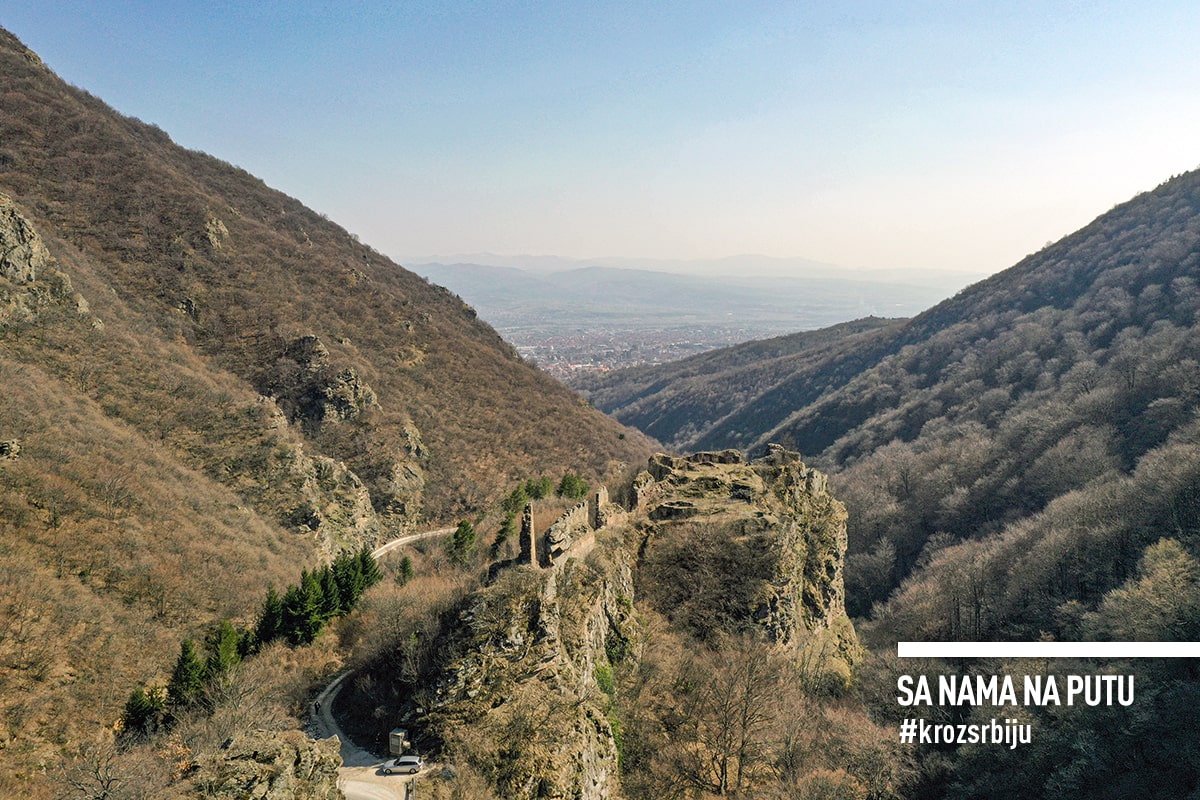
5. Because the Vranjska Spa has the hottest water in Europe
The healing water was used back in ancient times. Members of both Serbian royal lineages were also treated there. One of the kings is still present today at a mural on a rock over the river Banjštica. It is 12 kilometers away from Vranje, at an altitude of about 400 meters. It boasts the hottest, namely the hottest mineral water on the Old Lady’s soil. Temperature’s 96 degrees. It is extremely unusual to see water running from the faucet at the center of the spa and that it evaporates. Boiler’s gone, of course. It is beneficial primarily for bones ache. A sweet place for healing and recovery, but also for pleasant moments of rest. The old buildings need to be restored and refurbished. A new luxury hotel is being built in the rock, and the spa could soon become attractive even for gentlemen with “a deeper pocket”.
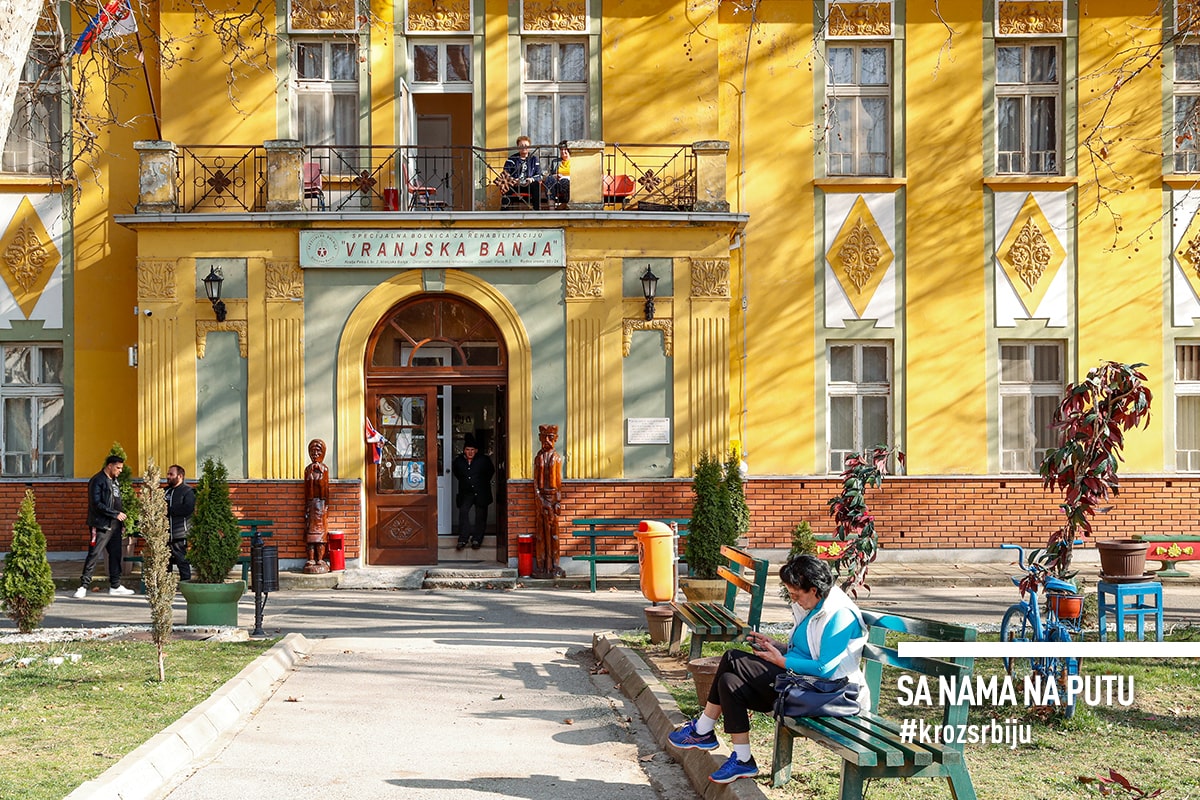
6. Because the Mišić Zoo houses dangerous animals
Children no longer have to go to the capital to see the wild beasts live. And there are quite a few – tigers, kangaroos, monkeys, lemurs, zebra, camel, flamingos, ibis, cranes, alpacas, llamas… In total there are about 2,000 representatives of 250 species. The owner is constantly increasing the crowd – a couple of lions have already arrived, and seals are expected soon. Homes of residents originating from exotic areas have air conditioning and underfloor heating, and there is no winter for them. Kids can hang out with their dogs and horses and attend the riding school. The Mišić Zoo, which covers about eight hectares of private property, is located in the village of Dulan, about ten kilometres from Vranje. You can come on a full-day family trip, but also spend a few days in a newly built hotel within the complex. Hedonism is guaranteed at the indoor pool with sauna and salt room. For kids a huge joy, for the Vranje region a great tourist offer.
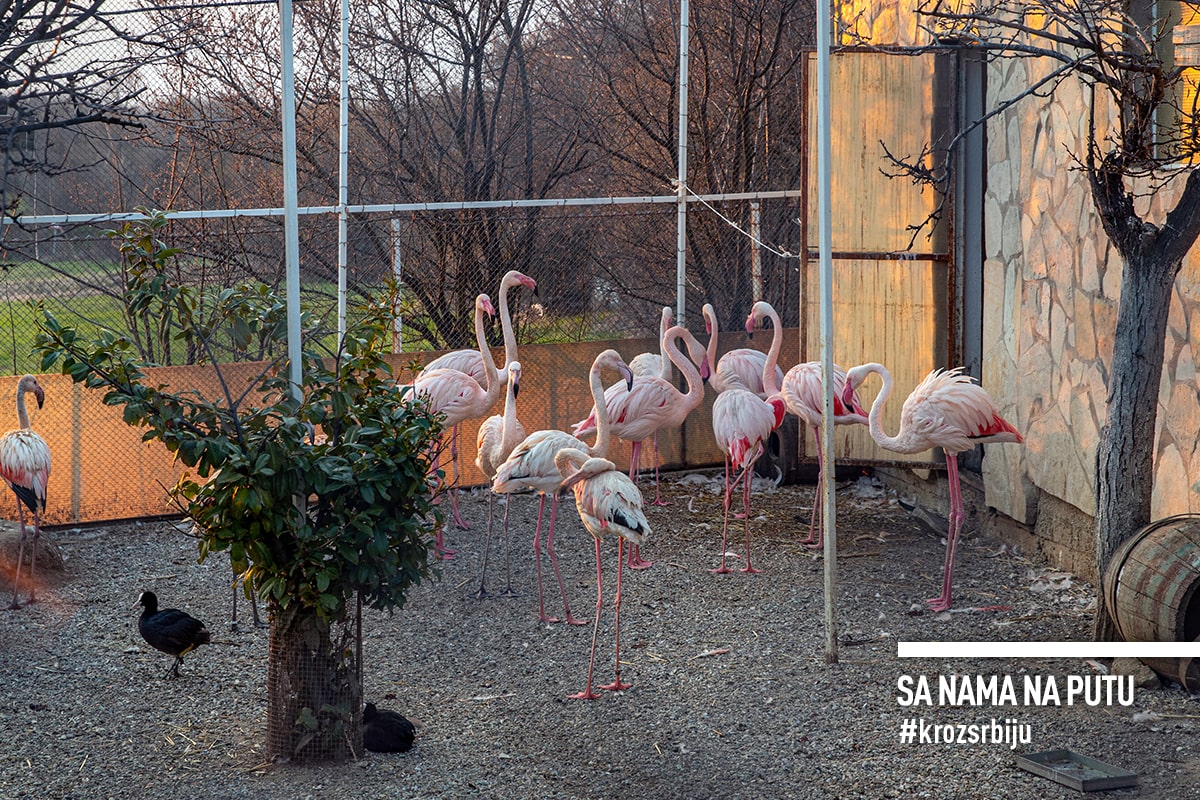
7. Because the restaurant Mišić hides the specialties of southern Serbia
After an exciting company with dear creatures, it is time to dine in the pleasant restaurant Mišić.It is always open for us to taste the specials of the region, order the veal tail under the sač. Bingo. The meat is chopped into small pieces, juicy and spicy in the manner of Vranje, fiery. Here come the beans on “tavče” – Macedonians to be ashamed of, the burger – the Nišlije to envy, and the hot cake that must have been made by a skilled housewife. And of course, the inevitable Moravian salad, a bowl for everyone not to struggle over it. The offer is rich – from roasting, through a variety of grilled meat, pastes and pizzas, to fresh water and sea fish. Let’s believe that everything is delicious, but the ponytail is top of the line. Warm recommendation. Wow, what a Southern ending to Vranje adventure. If only we had managed during the day to enjoy in the sun on the terrace of the restaurant. There ‘ll be a chance, because we’ll be back for sure when the little lions and seals move into the zoo.
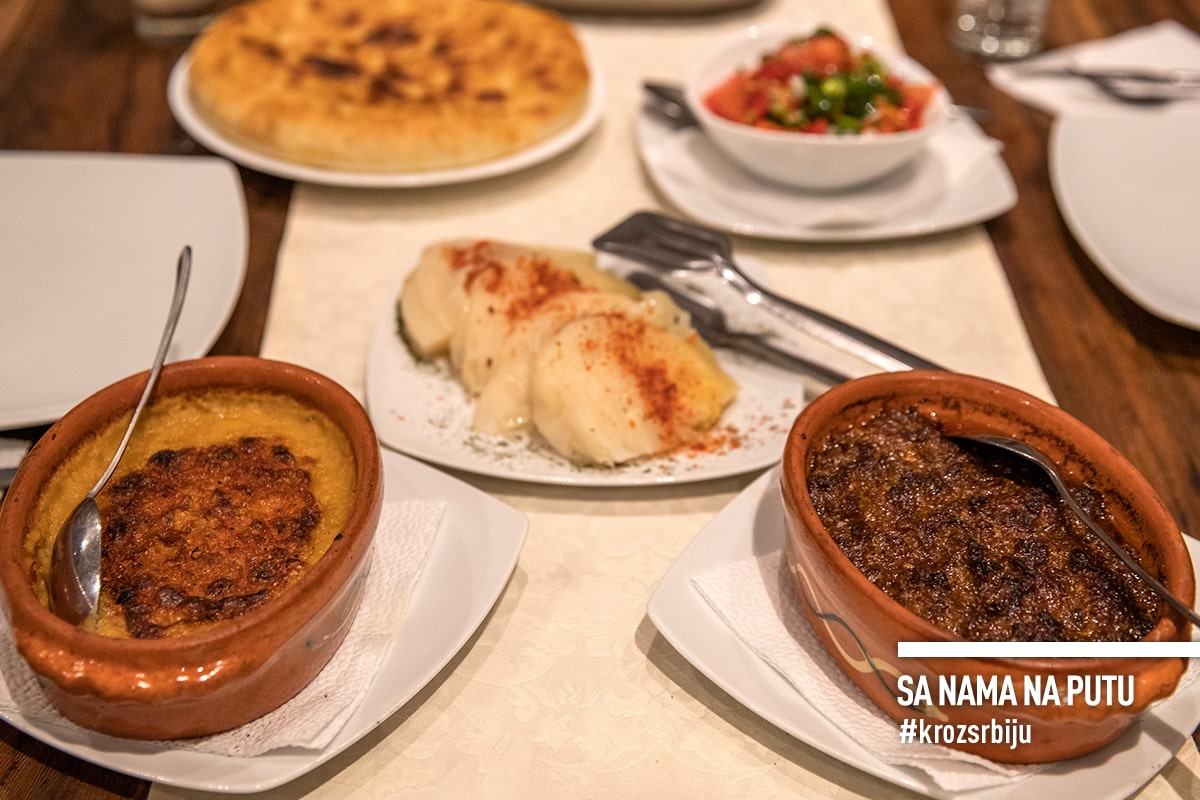
8. Because at NIS Petrol you can pay for fuel from the car
After the “Vranje safari”, the time comes for saying good bye. At PS NIS Petrol Vranje-grad, we poured fuel with the Drive.Go application. We came, the hospitable Vranjanac filled our fuel, and we scanned the QR code and paid through the app. No waiting, from your seat, quick and easy. We also took advantage of self-service car washing – it also deserves some rest after this adventure. Refreshed and full of impressions, we are heading back home – so that the impressions and the calf’s tail under the sač settle in our experiences as well as in our stomachs.
